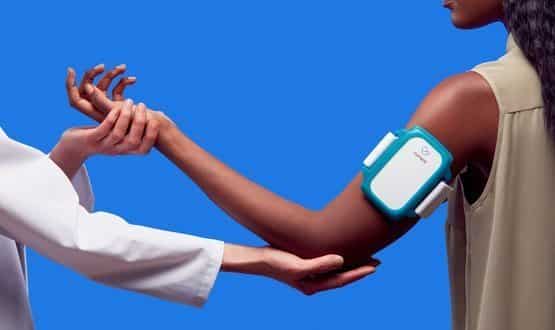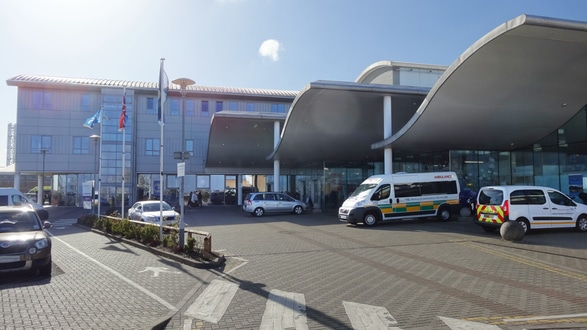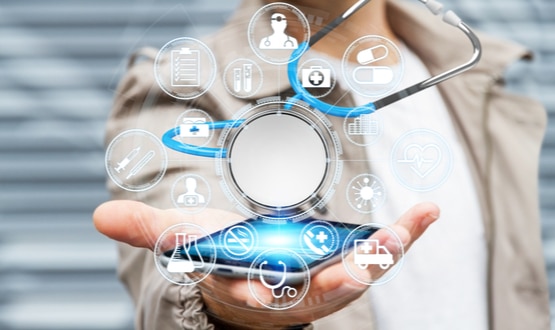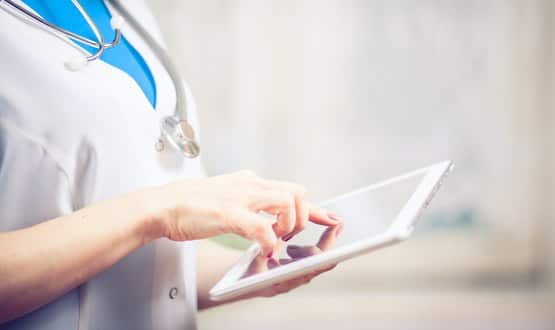Remote monitoring system saves a fifth of nurses’ time at Kent trust

A remote patient monitoring system has saved a Kent trust a fifth of nurses’ time – the equivalent of one extra nurse per shift.
Dartford and Gravesham NHS Trust implemented Current Health, an at-home wearable device that track patients’ vital signs, in its hospital at home ward 18 months ago and has seen a significant improvement in nurses working time.
Current tracks the vital signs of patients throughout the day, sending regular updates to a cloud-based system. An algorithm on the system then analyses their vital signs and alerts nurses to any deterioration.
Through using the system, nurses can prioritise patients and are alerted sooner to any risk of harm.
Speaking to Digital Health News, Neil Perry, associate director of digital transformation at the trust, said the system had also resulted in a reduction of interventions and A&E visits among patients.
“The traditional way of working for our hospital at home team was they’d go and see each of those patients every day and they’d record their vital signs and check on them,” he said.
“In Current we saw a real way of extending how many patients they can look after, the complexity of patients and reducing the amount of visits they had to do while increasing the amount of insights they’ve got.
“If they [patients] are deteriorating they can be seen much quicker, rather than waiting for the patient to call to say they’re not feeling very well or waiting on the next day’s visit, you get that information as soon as the wearable detects there’s a problem.
“It might be that the nurses that get the alert know about that patient and they expect them to alert quite regularly, or it might be that they’re deteriorating so we need to get someone out to go and see the patient.”
The hospital at home team consists of eight nurses looking after up to 25 patients at a time.
Through using Current around a fifth (22%) of nurses’ time has been saved. This is equivalent to having an extra nurse on the team each shift, Perry said.
Current’s algorithms are based on the National Early Warning Score 2 (NEWS2), which flags concerns with respiration rate; oxygen saturation; blood pressure; pulse rate; level of consciousness or confusion; and temperature.
This would usually be checked every 12 hours in hospital, Perry said, but Current’s wearable tech allows for constant monitoring and instant updates should something be wrong.
This allows nurses to plan and schedule their day “based on the risk of the patient” through information fed through Current. It allows them to visit high-risk patients first.
Not only is this providing better patient outcomes and faster recovery, but it’s making nurses day-to-day jobs easier, he said.
“They absolutely love it; it’s made their lives much easier. It gives them insight of what’s going on with that patient without the patient being in front of them.
“It makes our team feel like they’re able to give better care, but more importantly patients feel like they’re safer and being cared for much better.
“We’re also able to reduce how much time patients are under the care of our hospital at home team, which again helps us to take on more patients and frees up patients from the hospital.”
The patient benefit
There’s a myriad of evidence that suggests patient outcomes are better when they’re able to recover at home rather than sitting in a hospital bed.
Additionally, through allowing patients to recover at home, Current has freed up hospital beds for other patients, Perry said.
“There’s a massive benefit to patients to be cared for at home where they’re more comfortable,” he added.
“One of the biggest struggles in hospitals at the moment is patient flow – getting patients out of hospital beds so you can get sicker patients into them.
“This helps us speed up the flow of the hospital and it allows the team to take on and look after patients at home that we wouldn’t have done before – patients that would have been better off at home but because of monitoring needs it was easier to keep them in hospital.”
Perry said the system will eventually be scaled up across the trust, which serves some 500,000 people across three hospital.
The trust recently partnered with Australian company Alcidion to introduce a range of technology platforms designed by Alcidion with a view to “leapfrog” the digital maturity of other trusts in the region.
This includes deploying Alcidion’s health analytics platform, Miya Precision, and a clinical messaging app designed to lessen hospital staff’s reliance on paper and pagers.
Perry said the trust was working with Alcidion to align Current’s system with their software to allow vital signs to feed into e-notes.




